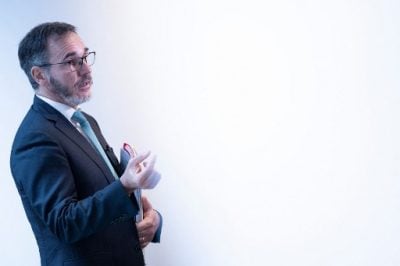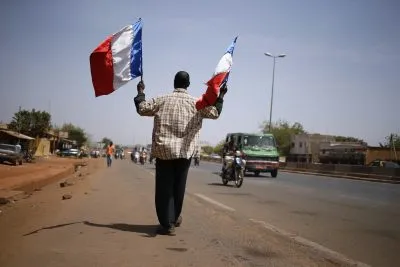African governments need to combine their work on climate change and disaster risk management if they are to respond effectively to the fallout of the climate crisis, according to a senior United Nations official.
Speaking at the African Risk Capacity Lecture on the side-lines of the COP26 Summit in Glasgow, Loretta Hieber Girardet, head of risk knowledge, monitoring and capacity-development at the United Nations Office for Disaster Risk Reduction, led the call for alliances across disciplines and sectors.
“We need to break down our institutional silos, understand risk is everyone’s business and work differently, because there’s a new normal. The way many countries manage climate change is that it’s sitting in a ministry of environment, and disaster risk management is sitting in a national disaster management agency.
“We are certainly seeing a recognition that the climate emergency is beyond what one ministry or sector can deal with… One of the most important partnerships I think that needs to be forged that has been brought home at COP26 is greater partnerships between those working on climate change and those working on disaster risk management.”
Hieber Girardet’s call for cooperation kicked off a vibrant discussion on the importance of smart partnerships between governments, organisations and private institutions to address climate risks.
Good planning and country engagement is key
Eva Kavuma, chief operating officer of African Risk Capacity (ARC), a specialised agency of the African Union established to help African governments improve their capacities to better plan, prepare, and respond to extreme weather events and natural disasters, said that working with African governments on detailed plans for disaster risk management is increasingly key to ARC’s work.
“For us to move the needle, good planning and country engagement is key. We need a clear idea of where the gaps are from the disaster risk management perspective. It’s that level of knowledge, the risk profiling component and country strategy papers that give us a good framework from which to build and work with a technical working group we develop ourselves.
“We will never develop a sustainable pipeline unless we build a culture where governments take full responsibiliy for the response when it comes to disaster risk management.”
Moving beyond vicious cycle of disaster-response-recovery
Yet finance remains a major problem. Panellists emphasised the need for disaster risk management to be well funded in order to be factored into African countries’ planning and climate change preparation.
Hieber Girardet said that between 2010 and 2019, over $133bn had been spent on disaster funding but only $5bn had gone into preventive measures. She argued that policymakers urgently need to move beyond a “vicious cycle” defined by “disaster-response-recovery” by working to prevent disasters before they wreak havoc.
Dr Martin Kipping, head of the climate policy division at Germany’s Federal Ministry for Economic Cooperation and Development (BMZ) said that the ministry’s projects increasingly focus on helping countries plan for disaster risks.
“Comprehensive disaster risk management is exactly the leitmotif we’re trying to implement in our cooperation with African partners. We have a major portfolio in adaptation worldwide and in Africa in particular. Topic-wise, resilience and climate risk finance and insurance has been one of our core areas for a couple of years, which started in 2015 at G7 when Germany held the presidency.”
Nevertheless, Kipping said that scaling up adaptation action will be dependent on improvements in project planning and analysis.

“We have made good experience by providing support and offering cooperation packages combining financial support and advice. A major challenge in scaling up adaptation action and funding is the analytical basis and proper planning.”
Key role for private sector
ARC’s Kavuma said that the private sector can play a key role in helping to plug those gaps.
“The private sector is key, especially in developing innovative solutions that they’d usually see as commercial but that can be used for public good. We’re trying to establish private sector partnerships. It’s not so simple but the benefits are very apparent because most private sector companies cannot afford to be seen not to be acting.
“We’re capitalising on that – I’ve identified a few private sector companies that would be really interested in working in disaster risk management financing and helping us to develop innovative tools. From a country engagement perspective, we have a real in-depth understanding of what people need.”
The ARC Lectures, launched at COP26, represent the first in a series of dialogues around disaster risk management. The African Risk Capacity currently works with 35 member states and has disbursed over $65m in disaster related insurance payouts to support the most vulnerable communities impacted by droughts, floods and tropical cyclones.
The Agency is developing a number of new mechanisms to also cover health outbreaks and epidemics.
This event on the sidelines of COP26 was coordinated by IC Events, sister company of IC Publications, publishers of African Business.
Want to continue reading? Subscribe today.
You've read all your free articles for this month! Subscribe now to enjoy full access to our content.
Digital Monthly
£8.00 / month
Receive full unlimited access to our articles, opinions, podcasts and more.
Digital Yearly
£70.00 / year
Our best value offer - save £26 and gain access to all of our digital content for an entire year!
 Sign in with Google
Sign in with Google 



